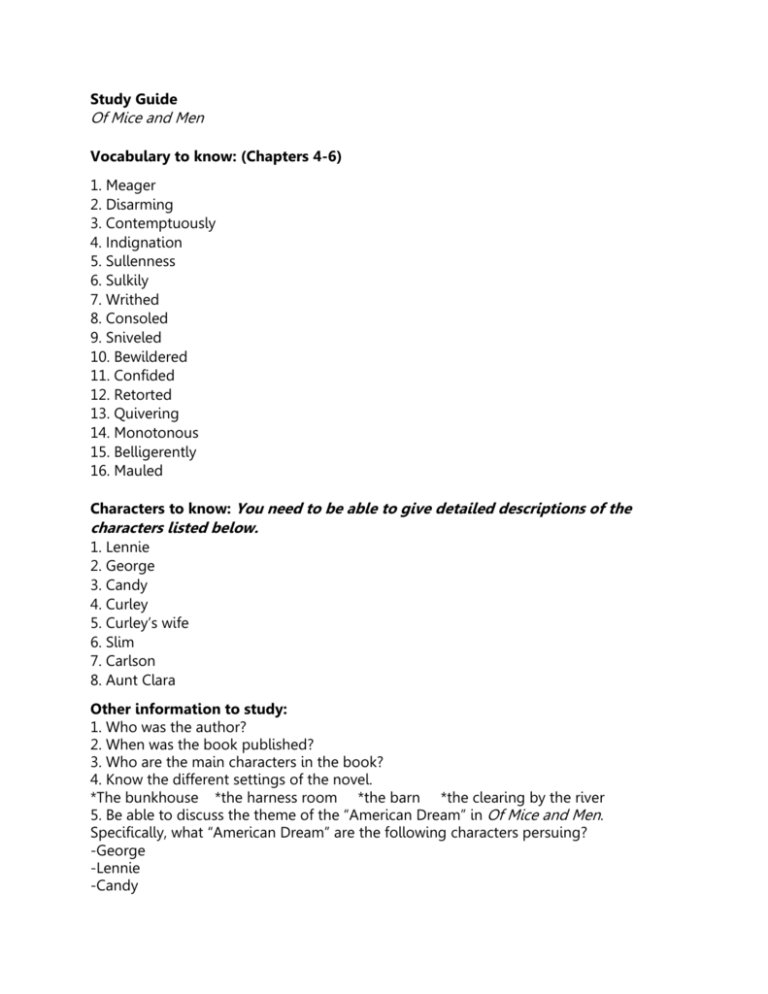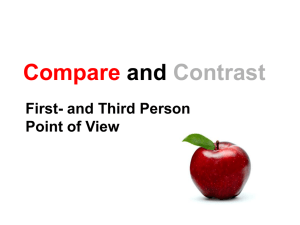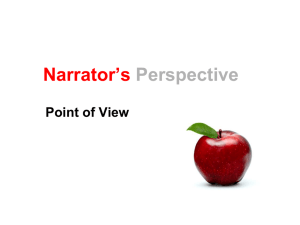Study Guide Of Mice and Men Vocabulary to know: (Chapters 4
advertisement

Study Guide Of Mice and Men Vocabulary to know: (Chapters 4-6) 1. Meager 2. Disarming 3. Contemptuously 4. Indignation 5. Sullenness 6. Sulkily 7. Writhed 8. Consoled 9. Sniveled 10. Bewildered 11. Confided 12. Retorted 13. Quivering 14. Monotonous 15. Belligerently 16. Mauled Characters to know: You need to be able to give detailed descriptions of the characters listed below. 1. Lennie 2. George 3. Candy 4. Curley 5. Curley’s wife 6. Slim 7. Carlson 8. Aunt Clara Other information to study: 1. Who was the author? 2. When was the book published? 3. Who are the main characters in the book? 4. Know the different settings of the novel. *The bunkhouse *the harness room *the barn *the clearing by the river 5. Be able to discuss the theme of the “American Dream” in Of Mice and Men. Specifically, what “American Dream” are the following characters persuing? -George -Lennie -Candy 6. Be able to discuss the theme of loneliness in Of Mice and Men. Give an example of a character who suffers from loneliness and be able to support it. 7. Be able to discuss the theme of dreams in Of Mice and Men and give an example of a character or characters who had a particular dream and how it died. *Discuss the dream George and Lennie had- how it dies. *Discuss the dream Crooks had- how it dies. *Discuss the dream Candy had- how it dies. *Discuss the dream Curley’s Wife had- how it dies. 8. Define symbolism. 9. The rabbits in Of Mice and Men symbolize10. The death of Candy’s dog symbolizes11. The point of view that Of Mice and Men is written in. First-Person Narration In this mode, the narrator is usually the protagonist or central character in the story. But even if this character is not the protagonist, he or she is directly involved in the events of the story and is telling the tale “first hand.” First-person narration is easy to identify, because the narrator will be telling the story from “I’s” perspective. Readers should watch for the narrator’s use of first-person pronouns- “I, me, my, our, us, we, myself, and ourselves,” as these will usually indicate that the passage is narrated from first-person perspective. Remember, with this skill readers are trying to identify the perspective of the narrator; therefore, one must ignore the dialogue of characters (indicated by “quotation marks”) and solely focus on narration, otherwise one is not analyzing the narrator’s point of view. In this mode, the narrator is usually the protagonist or central character in the story. But even if this character is not the protagonist, he or she is directly involved in the events of the story and is telling the tale “first hand.” First-person narration is easy to identify, because the narrator will be telling the story from “I’s” perspective. Readers should watch for the narrator’s use of first-person pronouns- “I, me, my, our, us, we, myself, and ourselves,” as these will usually indicate that the passage is narrated from firstperson perspective. Remember, with this skill readers are trying to identify the perspective of the narrator; therefore, one must ignore the dialogue of characters (indicated by “quotation marks”) and solely focus on narration, otherwise one is not analyzing the narrator’s point of view. Second-Person Narration In this mode of narration “you” are the agent, such as in this example: you walked down the stairs. As it is generally awkward for a story to be narrated from “your” perspective, this mode of narration is not used very often in narratives and stories. There are some exceptions, however, and second-person perspective is the primary mode of narration for choose your own adventure books and similarly styled writings. More frequently, directions and instructions and usually narrated from second-person perspective. In most cases, directions will be written in short imperative sentences, where the implied subject is “you.” But even when “you” is not explicitly stated, it is understood that “you” are the subject of directions and instructions. Third-Person Narration With this mode of narration, the narrator tells the story of another person or group of people. The narrator may be far removed from or not involved in the story, or he or she may be a supporting character supplying narration for a hero. Frequent use of “he, she, them, they, him, her, his, her, and their” by the narrator may indicate that a passage is narrated from third-person perspective. There are three distinct modes of third-person narration: objective, limited, and omniscient. Which mode the narrator is using is determined by a single variable- how much the narrator accesses the thoughts, feelings, and internal workings of the characters and shares them with the reader through narration. Characters’ feelings and motivations can be inferred and understood through their behavior and dialogue in each of the three modes of third-person narration; however, in determining which mode the narrator is operating, readers should be concerned with finding instances where the narrator explicitly reveals a character’s thoughts or feelings. Third-Person Objective Narration In this mode of narration, the narrator tells a third-person’s story (he, she, him, her), but the narrator only describes characters’ behavior and dialogue. The narrator does not reveal any character’s thoughts or feelings. Again, readers will be able to understand characters’ thoughts and motivations based on characters’ actions and dialogue, which are narrated; however, the narrator will not explicitly reveal character’s thoughts and/or motivations in narration. Third-Person Limited: When a narrator uses third-person limited perspective, the narrator’s perspective is limited to the internal workings of one character. In other words, the narrator reveals the thoughts and feelings of one character through explicit narration. As with objective narration, readers may be able to infer characters’ thoughts and feelings based on the behaviors and dialogue of those characters, which are narrated, but the narrator also directly reveals the central character’s internal perspective. Third-Person Omniscient: In this mode of narration, the narrator grants readers the most access to characters’ thoughts and feelings. With third-person omniscient narration, the narration will reveal more than one characters’ internal workings. The base word omni means “all,” and scient means “knowing,” so omniscient roughly translates to “all knowing.” In this case the etymology is accurate, because in omniscient narration, the narrator is all knowing.









